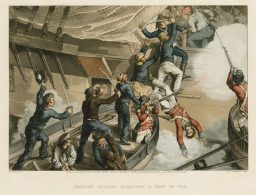 Privateers and Gentlemen (by Jon Williams) is like a Marine’s rifle – there are many Napoleonic naval miniature war games like it, but this one is mine. I played the heck out of it back in the ’90s. Well, at least I played the Heart of Oak naval miniatures portion of it. What got short shrift from me was the roleplaying portion due to lack of interested players and also my own uncertainty in running a game. As a roleplaying setting, the Napoleonic era games are pretty sparse on the ground. While Privateers and Gentlemen is not the sole role playing game to feature Napoleonic Sail, it certainly has to be the first. And, there is a lot of good there to be had.
Privateers and Gentlemen (by Jon Williams) is like a Marine’s rifle – there are many Napoleonic naval miniature war games like it, but this one is mine. I played the heck out of it back in the ’90s. Well, at least I played the Heart of Oak naval miniatures portion of it. What got short shrift from me was the roleplaying portion due to lack of interested players and also my own uncertainty in running a game. As a roleplaying setting, the Napoleonic era games are pretty sparse on the ground. While Privateers and Gentlemen is not the sole role playing game to feature Napoleonic Sail, it certainly has to be the first. And, there is a lot of good there to be had.
So, some history. Privateers and Gentlemen was published in 1983 but, the core miniature rules were first published in 1978. Like many games of the era, it started as a miniatures game with role playing rules tacked on later. Note correction from Walter Jon Williams himself, “…the RPG and the miniatures game were always marketed together, the miniatures rules didn’t come first…The original self-published two-volume set, miniatures and RPG, were 1978…The expanded, three-volume FGU set was 1981, and released along with the novels.” It appears I am wrong in this idea that Heart of Oak came first. Thanks to Walter Jon Williams for clearing up this confusion.
|
|
|
|
|
|
|
|
|
|
|
|
|
|
|
|
|
|
|
|
|
|
|
|
Note: Of these, Car Wars is unique in that it started with a simple but, coherent character system in the original game. Car Wars Deluxe refined the rules but, additional roleplaying aspects were primarily added through a variety of supplements over the years.
The roleplaying aspect mainly serves to feed the players into the miniature combat game. But, despite recent pushes to move roleplaying games toward less combat centered play, this style of play remains popular as can be shown by the continued popularity of the games on the above list.
The box contains three books: Heart of Oak, the aforementioned miniatures rules; Promotions & Prizes, the character creation rules; and, Tradition of Victory rules for creating ships, encounters, and history. Given its age, it features some of the typical downsides of this era of game: no unified game mechanics; a scattershot organization; and sometimes uses inconsistent terminology. However, reading it today, it also has all the features of a workable game and some things to endear you to it. Without going into extended description of the rules here are a few features I like. It shares with Traveler the feature of potentially dying during character creation (don’t get sick during the midshipman steps). How the game deals with initiative and combat order is interesting. Players first declare intentions then determine strike order which depends on weapon type as modified by the MASS (i.e. reach) and DEXTERITY of the character. Once combat begins if earlier acting events interfere with a player’s declared action, roll under DEXTERITY to determine whether another action may be declared. And, how can you not like a combat resolution process that begins “Light grenadoes” and ends “Grenadoes explode”. I expect this to be a somewhat slow system but, melee is not the focus of the game. And, a good thing too, because damage is dealt to by hit location with a typical arm taking 8 points of damage before being lopped off. With a cutlass doing d6+2, characters who get into too many melees (who survive) may soon be sporting eye patches, hooks, and peg legs. Plus, the book (all of them really) feature many historical tidbits that both encourage roleplaying and add to ways to interact with the rules. For example, a successful captain who earns enough money to buy a rotten borough can assign himself as Member of Parliament, which then can be used to increase his odds of promotion.
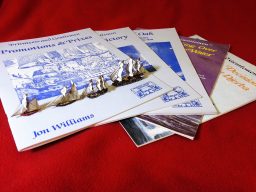
The focus of the roleplaying game is to feed players into miniature naval battles so characters, gunnery, sailing ability, and seamanship are the more important skills. Characters can be British or American naval officers, or Privateers. The game provides no information for playing nationalities other than British or American, though, one can see that an industrious player could come up with a French, Spanish, or Dutch character using the bones of the system without much trouble. If a character is a military officer the rules provide means of being assigned ships and generating missions (convoy, blockade, dispatch, cruizing, squadron, and special). If a privateer, there are rules for ship creation and missions are all cruizing. Encounters with other ships that end up in combat are played on the miniature table. The gains (in captured prizes) of victory are used to enrich your character, and further a player’s career.
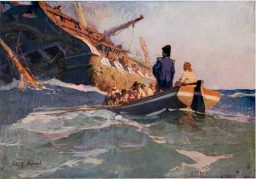
The miniatures game, Heart of Oak is a joy to play. It has enough crunch to generate lots of dramatic detail (fires, lost masts, broken rudders, boarding actions, towing with boats) while also simple enough rules for sailing and gunnery to not bog things down. Though, I would not use this set for the largest engagements (though you could) like Trafalgar. It is best suited for small to medium ship engagements. One modernization that might speed play would be the development of ship cards a la The Perfect Captain’s Spanish Fury, Sail!
There are also two published adventure supplements for the game. The first, The King Over the Water (by Jon Williams and J. Andrew Keith) is a series of four linked scenarios culminating with a devilishly difficult cutting out expedition (of four British frigates and a sloop) in an unknown stormy French Harbor guarded by one battery, a fortress, a ship-of-the-line (50 guns), and 4 frigates plus high winds, waves, shoals, and sandbars. Playing this scenario provides much opportunity for hilarious calamity. The second Decision at Djerba (by J. Andrew Keith) is an open ended campaign set in North Africa which culminates in a small fleet action. Neither is necessary to play the game but, both are well done and provide much inspiration for further play.
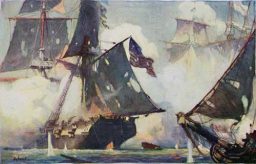
The author of the game, Jon Williams, is the well-known science fiction writer Walter Jon Williams. What many don’t know is that he started his career in nautical fiction with a series of books with the same name as his game Privateers and Gentlemen.
- To Glory Arise, originally The Privateer (1981)
- The Tern Schooner, originally The Yankee (1981)
- Brig of War, originally The Raider (1981)
- The Macedonian (1984)
- Cat Island (1984)
The series is not as well known or sung as much as it deserves. Stylistically, it stands in the thinly populated space somewhere between C.S. Forester and Patrick O’Brian. And, as far a nautical fiction goes, is one of the few book series that covers the War of 1812. I recommend the series highly both as literature and inspiration for the game.
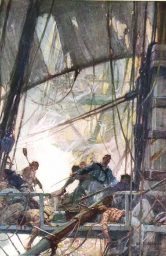
In summary, the game, to this day, remains an excellent miniatures games and a role-playing game with some notable features that are well worth trying in their own right. It begs for a second edition to improve organization and perhaps tighten up some of the rule mechanics (skills especially). One feature I would add, would be families for the characters to give them a greater number of things to do on land and to add further role playing complications. It seems something similar to the family system from 1st Edition AD&D Oriental Adventures might be just the thing. A Jack needs his Sophia and a Stephen needs his Diana after all. Why don’t you pipe yourself aboard and give it a try?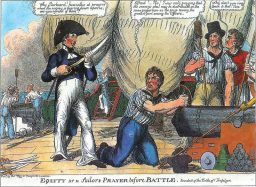
Back when I would’ve been most likely to play this, I wasn’t all that into Napoleonic naval stuff. However, I’ve read a fair amount of O’Brian and others since then. This looks like fun!
-
Oh, it’s a fun game. And, even if you don’t play the game, the novels are pretty great.
I have a plan for a getting a Great Lakes fleet going for War of 1812 action.